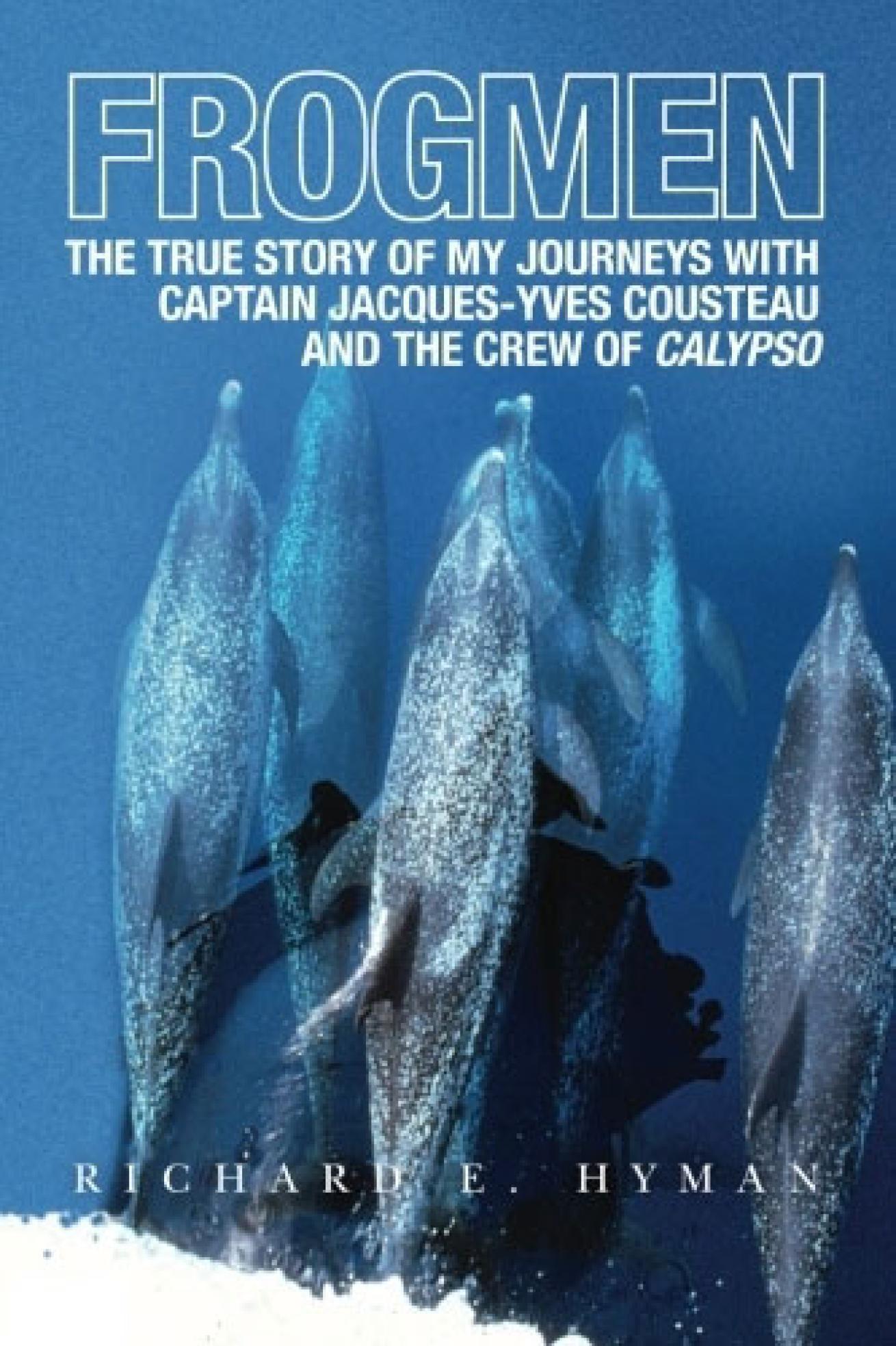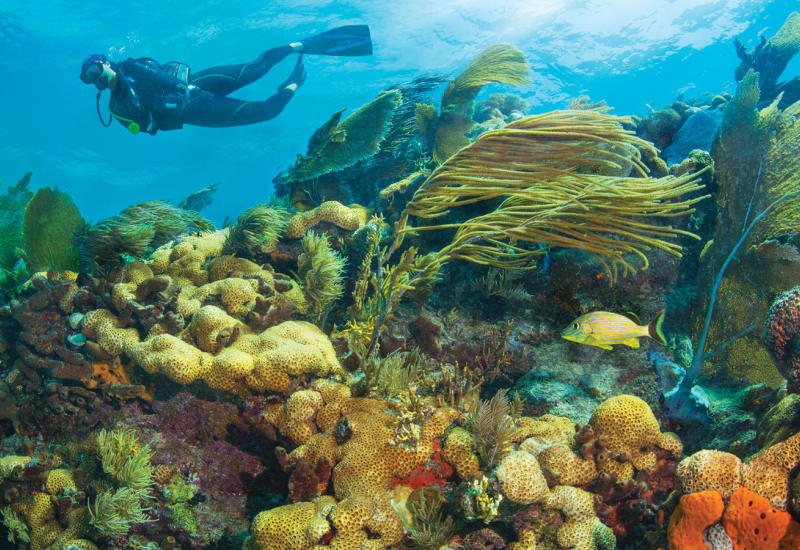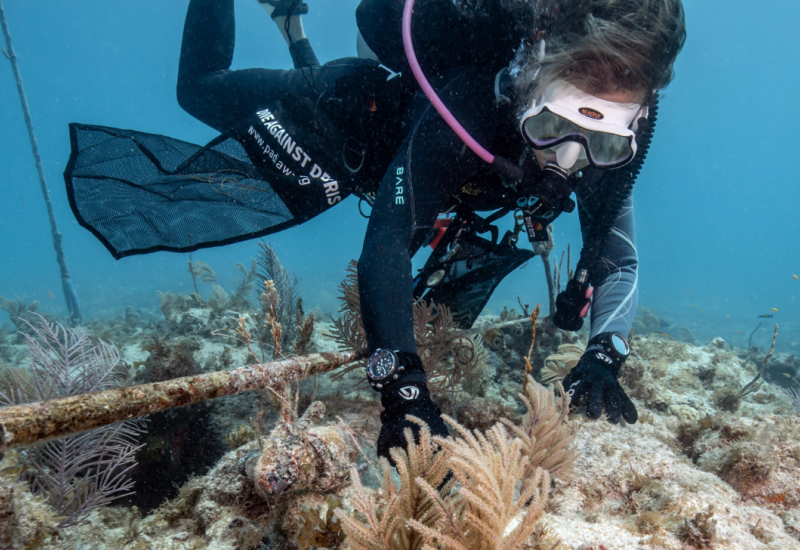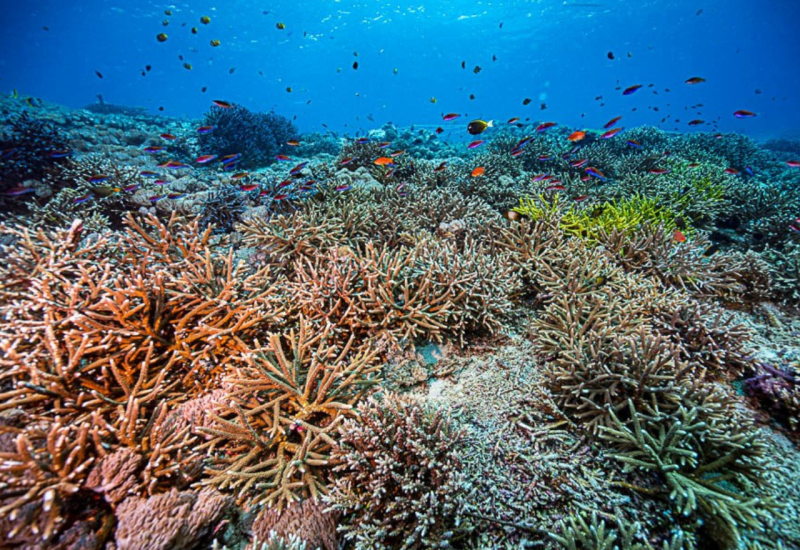At the Back of the Boat: Richard E. Hyman

Working With a Legend
In his personal account of expeditions with legendary French explorer Captain Jacques-Yves Cousteau and the crew of research vessel Calypso, Richard Hyman takes us behind the scenes, inside the ship and under the sea. Frogmen: The True Story of My Journeys with Captain Jacques-Yves Cousteau and the Crew of Calypso is an inspiring true adventure of a young man who pays homage to one of the greatest explorers and visionaries of all time. Cousteau was a two-time Academy Award winner, received 40 Emmy nominations and created 100 films. We recently caught up with Hyman to ask him about his extraordinary experiences with Cousteau.
Bottom Time: What was it like to work for Jacques Cousteau when you were only 18 years old?
Richard Hyman: It was a tremendous privilege and quite a thrill. I’ve always had a passion for the environment and a taste for adventure and the sea, so this offered both, at a pretty young age.
BT: What kind of work did you do for him?
RH: My first job was as a truck driver and carpenter. In 1973, I was having dinner with Captain Cousteau, his sons Philippe and Jean-Michel, Ivan Giacoletto (diver), Louis Prezelin (diver), and my Dad (who was Cousteau’s partner) in Los Angeles, when the Captain asked if I’d like to help out with a film project and drive a truck from Los Angeles to Saskatchewan (Canada). I had no idea where Saskatchewan was, but I jumped at the opportunity. Ivan and I drove a truck full of cameras and other supplies to Lac La Ronge. Then via seaplane, we shuttled the material into the wilderness to Foster Lake, where we established a campsite and built a house for the Cousteau team to winter in. This is where Beavers of the North Country was filmed.
I was asked back a year later and met the team in Panama City, Florida. This was the first time I saw R/V Calypso. I had the choice of sailing aboard the ship during an oceanography study taking water samples throughout the Gulf, or joining a small team to dive and film manatees in warm springs and stone crabs off fishing boats in the Gulf. It was an easy decision; I chose to dive. My job was to assist with the underwater lights.
The day after Christmas 1974, I flew to Mexico, where I joined Calypso anchored off Isla Contoy. We spent a month or so filming the Incredible March of the Spiny Lobster, and then sailed south along the Belize Barrier Reef, filming part of Mysteries of the Hidden Reefs. Well offshore of Belize, we filmed the spawning of grouper, The Fish that Swallowed Jonah. This was fascinating as thousands of grouper congregated, danced and changed colors, in a location only 150 yards in diameter. We also had a visit from singer songwriter John Denver and filmed a concert that he performed for us. John Denver was quite a man, very gifted and sincere. He won an Emmy for the show that aired the concert. During this expedition, I conducted independent university scientific research for credit and my job on the ship was as a deck hand. I did a lot of dirty work, but learned a lot about diving and navigation, and was happy to be part of the crew.
After that expedition, I worked on my diving and photography, graduated from college, and spent a year in business, but when Captain Cousteau again came calling, I returned to Calypso for my final expedition — this time as a diver. Calypso divers double as navigators, so I did that too, taking many a watch on the bridge at all hours of the day and night. The highlight of this expedition was diving on the USS Monitor, the Civil War ironclad in 230 feet of water off North Carolina’s Outer Banks. She sank on December 31, 1862, and the wreck was not discovered until 1973. We were the first untethered divers on compressed air. These were dangerous deep dives with a strong Gulf Stream current. Unfortunately, when we were hit by severe weather and engine problems — not a good combination — we had to abort and head to Morehead City, North Carolina. We limped down the coast with subsequent engine problems, but eventually made it to Martinique where we did some amazing diving on a number of relatively deep-water wrecks off the coast of St. Pierre. We used our side-scan sonar to plot the ocean bottom and discovered a quantity of wrecks that were sunk by the 1902 volcanic blast of Mt. Pele.
We concluded this expedition by continuing on to Venezuela and conducting a coastal oceanography survey for the government.
BT: What was Jacques Cousteau like?
RH: Captain Cousteau was the real thing, genuine, a great man. I cared for him and for what he stood for. I’ve never met a more diligent person. I’d often make my rounds during watch, and at all hours of the night he’d be in his cabin writing.
As I wrote in my book, “I knew Captain Cousteau as a thinker who could be approached on any topic and relied on for a well-formulated and passionately- supported opinion. If you disagreed, he would gladly debate. He regretted that the Aqua Lung had led to spear fishing and the associated devastation of the world’s coral reefs. He was an ardent opponent of spear fishing, and spear guns were strictly banned aboard Calypso. He often spoke of returning on expedition to the Red Sea to study the environmental impact of oil in the Persian Gulf. I’d been scheduled to join such an expedition, but the concerns about security, war, and terrorism prevented us from going. Cousteau feared, perhaps prophetically, that man would refuse to respect morality by developing more and better techniques to fight and exploit each other and nature. He promoted peaceful teamwork as a solution to protect one another and our natural world, something that today seems to be universally ignored and forgotten.”
BT: Why did you write the book?
RH: Aside from loving to write and wanting to tell my story, I wrote the book for three reasons. First, to do my little part to keep Jacques Cousteau’s legacy alive. Second, to preserve the messages he tried to convey to us; for example: “People protect what they love.” I think your readers would enjoy this quote from the book: “When you dive, you begin to feel that you’re an angel.” Third, to “encourage others to pursue their individual dreams and to take their own journeys, whatever they may be.”
BT: Tell us about some of your most memorable moments.
RH: From a diver’s perspective, diving on the USS Monitor had to be the pinnacle. A less glamorous dive, a night dive, was in Martinique when I had to recover some human bones. I always enjoyed diving with Bernard Delemotte. Bernard was a Chief Diver and in my mind he had a sixth sense. He was able to gently approach creatures on land and under the sea. Bernard taught me how to be a better diver.
It was very frightening when we lost the engine during the storm at the Monitor. It was mysterious because we were in the Bermuda Triangle and didn’t see any approaching weather on our satellite imagery. I thought we might suffer the same fate as the Monitor. Calypso’s wooden hull sounded like it would snap like a matchstick. That’s the first time I looked for the lifeboats.
Another “far-out” memory was John Denver’s concert. It was such a fun evening. We had some special rum punch and John was so generous, playing for us for an hour, and then when Madame Cousteau joined us, he spent another hour playing her requests. Madame Cousteau was a lovely lady. Her nickname was La Bergere, meaning the Shepherdess.
**BT: **What’s next for you?
RH: I’ve enjoyed an interesting career in business, primarily telecommunications, technology and software related companies. Right now I’m in between positions and I’m looking for a new opportunity. I’m excited about the future, looking forward to more success and new adventures. Also, with strong encouragement from the dive clubs that I’ve presented to, I’m looking forward to getting back in the water and diving.
To order Frogmen: The True Story of My Journeys with Captain Jacques-Yves Cousteau and the Crew of Calypso, go to richardhyman.com.










